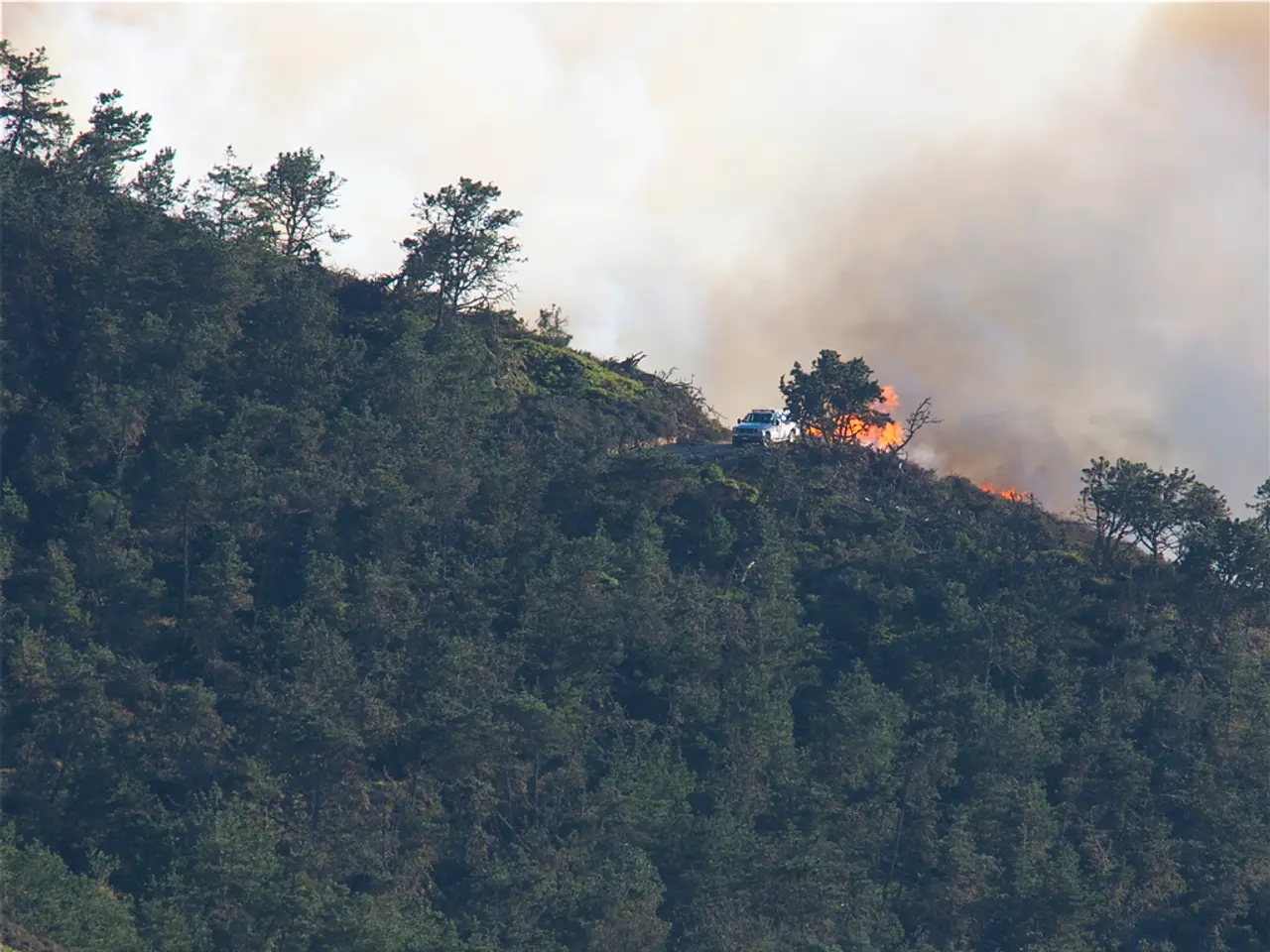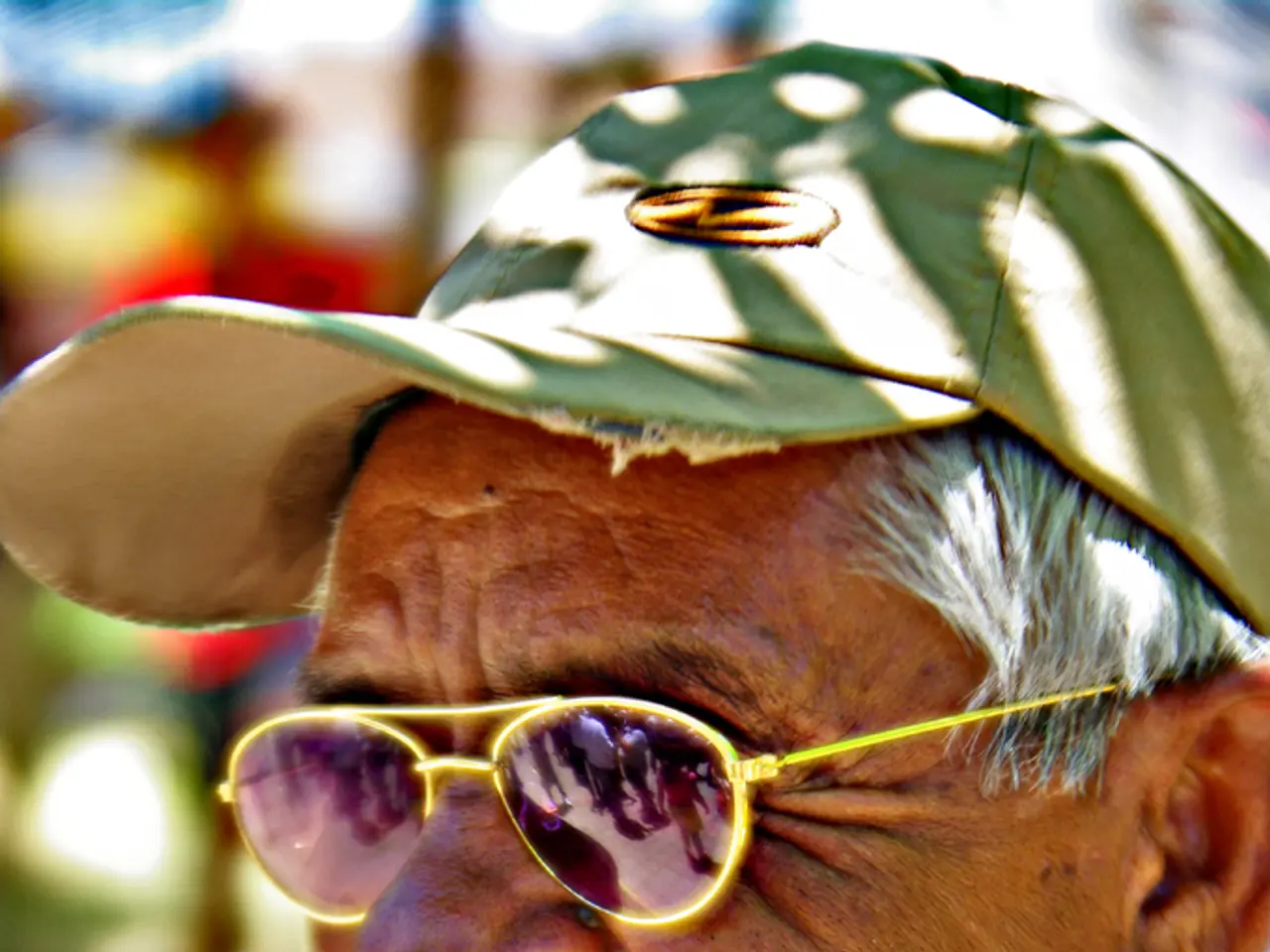Intense Heat and Severe Drought: Fire Hazard Reaches Critical Level
In a series of unfortunate events, wildfires have been causing destruction in both France and Turkey over the past week. On Saturday, July 5th, a fire ravaged a part of the unharvested wheat in the south of Poitiers, France, burning 140 hectares of vegetation. Meanwhile, in an area yet to be specified in Turkey, a separate fire broke out, affecting thousands of hectares of land and resulting in the evacuation of over 50,000 people.
The fires in both countries are attributed to the intense heat and prolonged drought in the regions, raising concerns about the ongoing fire conditions. In wildfire science, a critical threshold known as the "Rule of 30" describes a bad fire day when three conditions coincide: temperatures exceed 30°C, wind speeds are above 30 kilometers per hour, and relative humidity drops below 30%. This triad—temperature, wind speed, and humidity—is foundational in predicting and understanding wildfire risks and dynamics.
While the exact "Rule of 30" was not mentioned in relation to the fires in France and Turkey, the concept strongly influences fire outbreaks because these weather conditions exacerbate fuel dryness and promote faster, more intense fires. The interaction of weather with other factors like fuel availability and topography is critical; however, weather conditions can change rapidly, causing sudden shifts in fire behavior and increasing danger.
In the south of Poitiers, a local resident feared that their house was lost due to the fire, but fortunately, the house remained standing thanks to the efforts of the firefighters. Similarly, the fire in Turkey resulted in no reported casualties, though the video above provides a full report on the incident.
It is essential to note that the "Rule of 30" is a general guideline for understanding fire conditions, not specific to a particular location or time. Fire incidents have been occurring in France and Europe for the past ten days, underscoring the importance of vigilance and preparedness in the face of these dangerous conditions.
As the world grapples with the impacts of climate change, wildfires are becoming increasingly common and destructive. The "Rule of 30" serves as a reminder of the crucial role weather plays in wildfire outbreaks and the importance of monitoring and predicting weather patterns to mitigate the risks associated with these natural disasters.
- The wildfires in France and Turkey, driven by the intense heat and protracted drought, are drawing attention to the potential threats posed by climate-change-induced weather conditions on the dynamics of environmental-science topics like wildfire science.
- To combat the increasing frequency and ferocity of wildfires, weather forecasting becomes a crucial tool in weather-forecasting sectors as it allows for the prediction of the "Rule of 30" weather conditions, which are known to exacerbate fire outbreaks.
- Though sports and sports-betting may seem far removed from the wildfires in France and Turkey, weather conditions play a key role in both domains, affecting everything from professional outdoor events to the strategic planning of bets—notably when extreme weather poses risks to game scheduling or player safety.
- As wildfire risks escalate globally, encompassing nations such as France and Turkey, the significance of understanding and harnessing the power of environmental-science, including weather forecasting and wildfire science, assumes paramount importance in preventing and mitigating future catastrophes.







